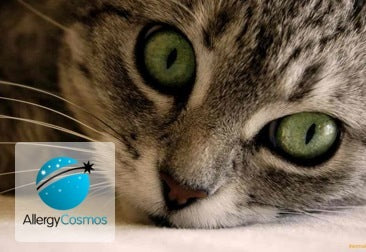Cats are in most households a much-loved member of the family, but a cat's odour and dander can create severe problems for anyone with cat allergies or Multiple Chemical Sensitivity (MCS). Exposure to cat dander increases the likelihood of developing allergies or asthma and experiencing allergy symptoms. But even if you are not allergic, cat odour is just unpleasant around the home and it builds up over time. My friend who is also a cat lover had a particular problem with the odour from her cat when she wanted to sell her home. She didn't mind it too much, but her estate agents and potential buyers noticed it right away and were not pleased.
There are a number of things you can do to get rid of cat dander in your home. If your cat is an indoor cat - as many are in urban areas - then you will need to use a litter tray. Make sure this is cleaned out regularly. Yes, it is another chore but a dirty litter tray puts you and your family’s health at risk. High quality cat litter will also adsorb more odour than the cheap stuff. Also, did you know that cats fed on cheap cat food tend to emit more odour than those fed on quality brands - so please don’t be tempted to economise (at least not on your cat!). Male cats emit a stronger odour than females - they use it to mark out their territory. But females produce extra ‘scents’ when they are in heat. Don’t be tempted to burn candles or use air fresheners to get rid of cat dander - people with MCS may well react to the smoke or chemicals in these products, and the chemicals will make general allergy and asthma symptoms worse.
Cat odour comes mainly from the animal’s urine and a major component in it is ammonia (the smell of rotting fish). An air purifier such as the IQAir GC AM is especially designed to remove molecules of ammonia and related compounds known as amines. The GC AM air purifiers contain specialty gas filter cartridges packed with 5.4 kilograms of wide-spectrum media mix of granular activated carbon and KMnO4 impregnated alumina. This media mix adsorbs ammonia, amines, and ammonia-based odours. The GC series of air purifiers are the most effective air cleaners of their kind, and they are used in domestic as well as professional environments where odours and gases are a problem, such as veterinary settings, mortuaries and autopsy labs, hospital wards and hair, nail and beauty salons. Another IQAir purifier model of the GC series is the IQAir MultiGas. It removes the widest range of chemicals and odours from indoor air. The GC MultiGas air cleaner has been specially developed for people with Multiple Chemical Sensitivity.
Of course, cats - and other animals - also produce dander, which can be a potent allergen. The proteins in a cat’s saliva and sweat can trigger asthma attacks or other allergy symptoms. The IQAir series of air purifiers contain a HEPA filter, that will filter out virtually all allergens from the air. Cat dander particles are very small - typically between 2.5 and 0.5 microns in diameter and are readily stirred up into the air. The HEPA filter, however, will easily get rid of cat dander, as well as much smaller particles such as fine dust and viruses.




